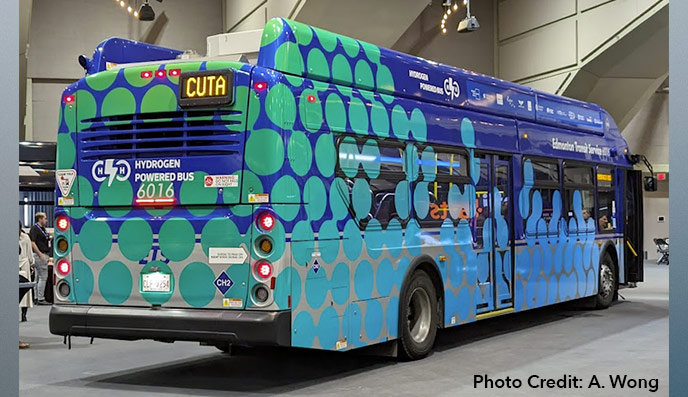
Electric Trolleybuses
Trolleybuses draw power from overhead wires located above the roadway for all or part of their route.


Awareness of the impacts of air pollution and the release of greenhouse gases are greater than they have ever been before. Health Canada estimates that there are about 15,300 premature deaths in Canada each year that are directly attributable to air pollution, with most of these occurring in urban centres. It is also the consensus of the scientific community that the release of greenhouse gases is contributing to a rapidly changing climate worldwide.
Transportation is a significant contributor to air pollution as well as the greenhouse gas burden through the use of internal combustion engines, like the gasoline engines found in automobiles and the diesel engines found in buses and trucks. There is a growing desire, if not a growing urgency, around the world to move away from the dependence on internal combustion engines and toward electric mobility, with many jurisdictions having imposed timelines for ceasing the production and sale of new internal combustion vehicles as well as the adoption of zero emission fleets.
The City of Edmonton has already committed to achieving net zero greenhouse gases from city sources by 2040. But the future is likely to bring much more stringent requirements in terms of what forms of motive power are acceptable in municipally operated fleets.
The reality is, electric mobility is coming, and given the accelerating pace of climate change, some believe it cannot come fast enough.
Edmonton has made great strides recently in expanding the use of electric light rail as key component of the transit system, and this seems likely to continue. But alternatives must be found for the City’s large diesel bus fleet.
There are currently three technologies available for electrifying urban bus operations:

Trolleybuses draw power from overhead wires located above the roadway for all or part of their route.

Battery Electric Buses are powered by onboard batteries.

Fuel Cell Electric Buses use compressed hydrogen to generate electricity by means of a chemical reaction.
To learn more about each of these electric vehicle technologies, click on the photos/links above.
To successfully move forward to a zero emission future, there are some basic precepts that must be understood and accepted:
Once these things are accepted as reality, one will see the necessity to get over any reluctance to make investments in overhead wires and other infrastructure needed to implement the technologies that can lead to zero emission public transport.